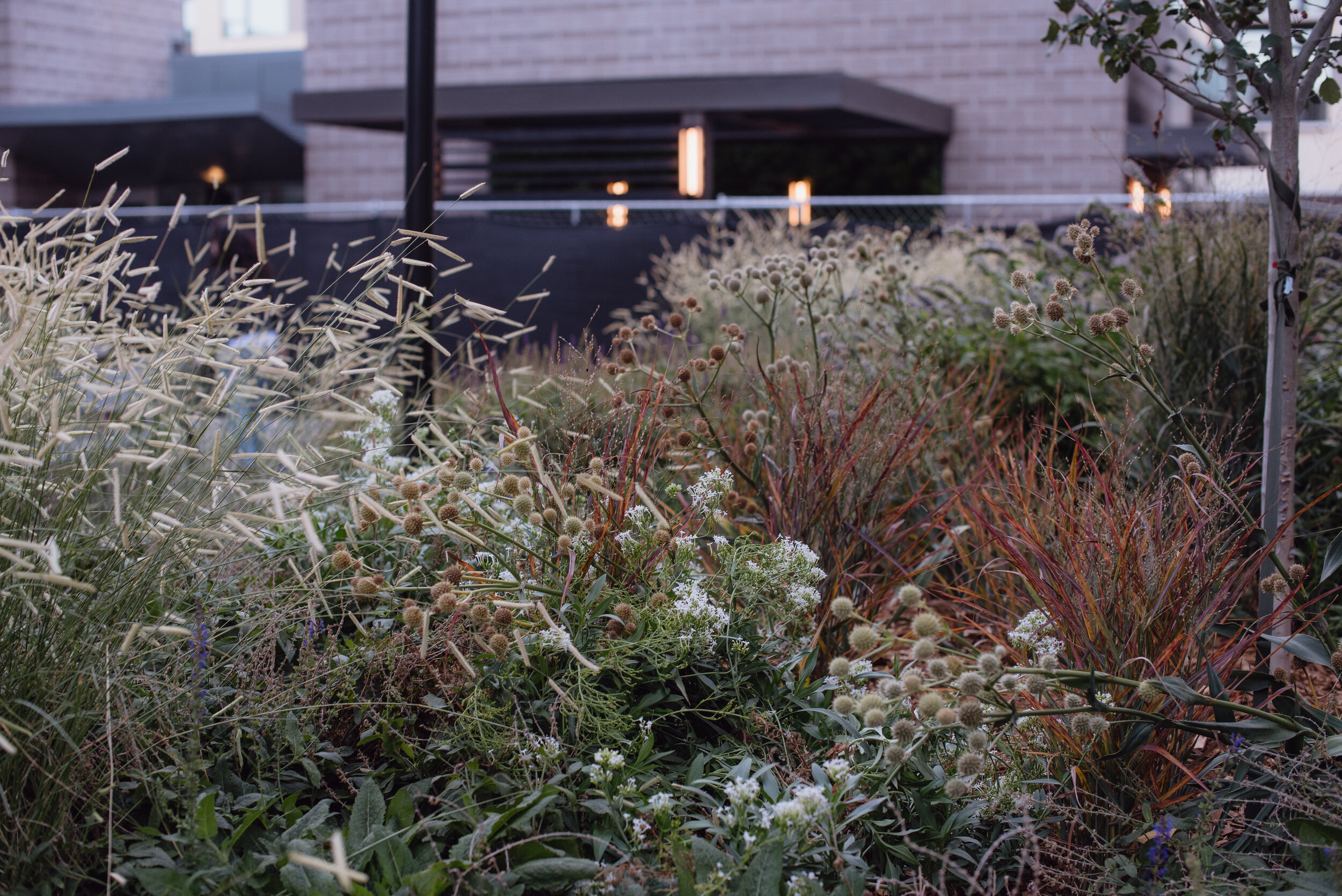By Emily Maeda:
September 21, 2021
As cooler weather moves into Colorado and we begin to see the leaves change, we look towards our yards and the mounting to-do list we see there. Thoughts of cleaning up dead leaves and overgrown plants move to the forefront, and we start planning our fall cleanup. I am writing to you today to free you from these chores, or at least a portion of them. While I can’t stop the leaves from falling I hope to convince you to leave your perennials and grasses standing through the winter. The growth and splendor of the summer does stop, but its beauty can be enjoyed long after the summer ends. Instead of cutting everything back this fall, let the seedheads and growth remain. Grasses, perennials, and shrubs add texture and color to the barrenness of winter, provide food and shelter for birds, and open new ways for us to see our Colorado landscapes. You can join us in our fall mantra: let them stand.
As plants go dormant at the end of the growing year, we are left with a beautiful garden
Fall and its unique light are captured in the movement and color of our native grasses. Autumn is the crowning glory of grasses. Their colors are complex and changing: reds, blues, greens, yellows, and even pinks. Their seedheads glow in the evening light and mesmerize us with their movement in the slightest breeze. Keep this glory for as long as you can! While the seedheads will diminish, they remain surprisingly strong throughout the fall and winter. You will find birds perched upon them, eating the seeds and taking the blades for their nests. Their statuesque form and height fill the garden in the winter months. Without their presence, the space is barren and empty. Let them stand. The same is true for perennials. Many perennials have great form that also persists into winter such as Baptisia with its black seedpods or Echinacea with its bold cones. Along with grasses, these strong perennials offer up not only great form but beautiful color. The red flowers of sedum ‘Autumn Joy’ deepen into a dark maroon that remains present all winter. The black centers of rudbeckia look like small pom poms through the season. Enjoy their after-party attire. While summer may be gone, they are not done looking beautiful. Let them stand.
Bouteloua gracilis ‘Blonde Ambition’ mingles with Rudbeckia fulgida ‘Goldstrum’ and Agastache ‘Blue Fortune’
As I mentioned above, grasses and perennials not only add aesthetic appeal to our yards but they also perform an important function in supporting wildlife through the lean winter months. Leaving the seedheads and plant material provides food and shelter for many species in the winter. Remembering this helps us to realize the important function of gardens within an urban context. Don’t make your yard a food desert for the animals who depend upon the natural growth of multiple species of plants to survive. The berries on shrubs and trees remain a favorite of birds in the winter as well. The multiple species within your landscape all combine to take care of the animals who rely on them in the winter.
Andropogon gerardii ‘Red October’ and Bouteloua gracilis ‘Blonde Ambition’
Finally, I think this is a place Coloradoans could grow in their appreciation of their state. Colorado is a semi-arid desert. The broadleaf evergreens like holly and boxwood, with the exception of mahonia and a few others, do not thrive in Colorado’s arid climate; so if we are interested in green in the winter we have the large evergreen trees and junipers as our plant palette. But if we are willing to open our eyes further, we can begin to see the beauty contained in the senescence of our plants. We can see the amazing color palette that opens as plants die back. We can appreciate their form and texture in new ways and see the landscape around us with renewed love. Rather than seeing brown as the absence of green, look deeper and see the magic that happens when we let them stand.
Bouteloua gracilis ‘Blonde Ambition’, Schizachyrium scoparium ‘Blaze’ and Eryngium yuccifolium





